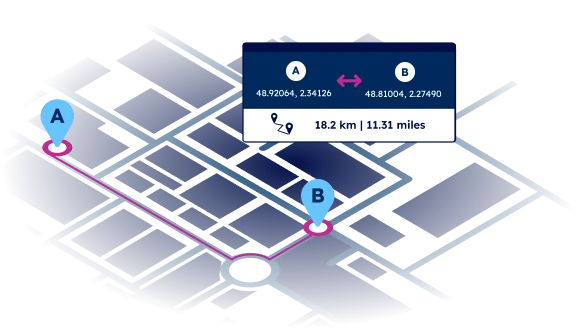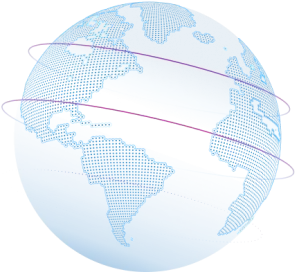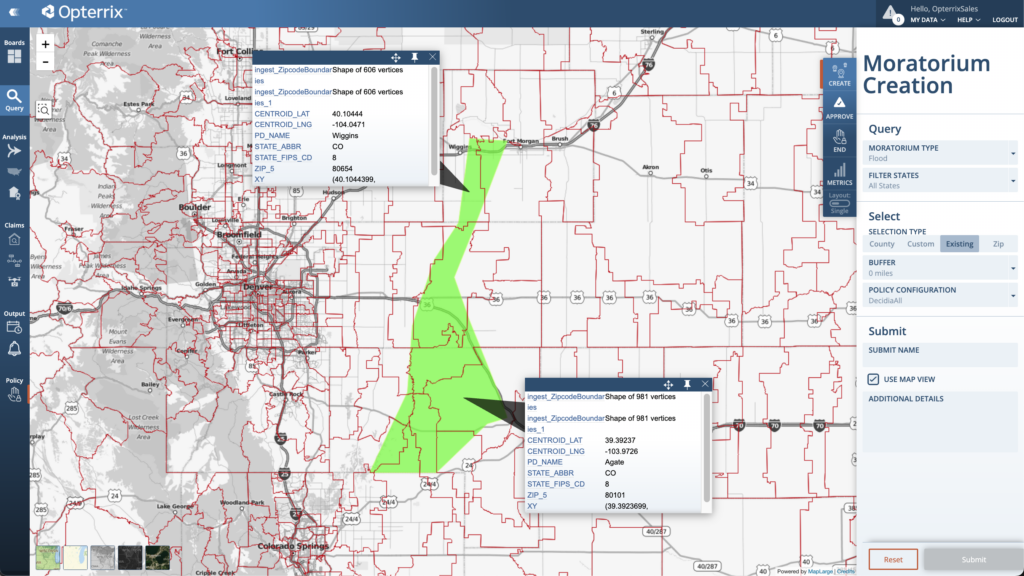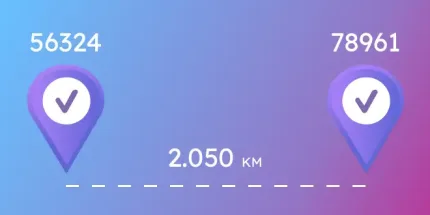Calculate the distance between zip codes
Geocoded data for accurate distance calculation and radius search.




SOLUTIONS
Get the right data for your use case
Optimize your shipping operations
Design and optimize your distribution network, plan your pick-up and drop-off locations, calculate CO2 emissions, and improve visibility.
Radius Search
Match locations within a certain perimeter based on reliable geocoordinates. Target customers with geofenced ads, map delivery zones for logistics companies and organize localized teams.
Distance between supply and demand
Leverage accurate geocoded data to provide your users with the search experience they deserve.
Ad targeting
Design custom areas for geofencing and targeted advertising. Obtain actionable insights into customer behavior including geographical distribution and travel distances.
Map reliable risk areas
Ensure a proper identification of addresses at risk, determine the extent of the damage and identify the affected zip codes with precision.
“GeoPostcodes has helped us enrich our internal data with accurate coordinates for postal code matching at global scale. We can now calculate distances between the customer’s home address and different event venues to optimize marketing activities and spending.”
Dr. Timo Schulze
Head of Customer Analytics & Campaign Management
Why use our data to calculate distance between zip codes?
Global coverage
Reliable and up-to-date data for geocoding even in difficult geographies such as China, the UK, Russia, or Brazil.
247 countries in a standardized database

Reliable geocoordinates
All the geocoded global data your local team will appreciate. Our database allows precise geocoding up to street level, including zip codes, regions, cities and streets.

Additional attributes
The data can be enriched with country-specific information, distance to the center of the city, UNLOCODE and IATA codes, port terminal specifications, and time zones.

WHY GEOPOSTCODES
High-quality spatial data and unique expertise
Highest quality
- Advanced geocoding
- 247 countries
- Frequent updates
Enterprise Grade Service
- 100+ successful integrations
- Dedicated Customer Success Manager
- Self-hosted
Plug and Play Design
- Seamless integration
- 299 languages
- Standardized and unified data structure
Customer stories
Match locations within a certain perimeter with accurate latitude and longitude coordinates. Provide accurate address matching for suppliers and consumers and improve the customer experience in your platform.
Calculate distances to map hazard-prone areas or determine the extent of damage in a specific zip code. Develop effective underwriting strategies to mitigate losses for your customers.

Calculate the distance between customers and interest points to offer personalized recommendations onsite and in push communication.

Generate more accurate matches based on the city’s coordinates. Calculate distances between supply and demand to provide your customers with the best service.

Our distance calculation articles
Frequently Asked Questions
The most populated zip code in the United States is 92154 located on the border with Mexico in San Diego, California.
In the United States, many zip codes have no population at all. Here are a few examples:
- 80294 – US District court of Colorado
- 20593 – National Air and Space Museum in Washington DC
The largest zip code in the world is 99950, which belongs to Ketchikan, Alaska, in the United States. This zip code covers a vast area, including remote and sparsely populated regions.
Refer to the following websites for accessing the latest international demographic and statistical data:
US Census Bureau: Delve into an array of population statistics and demographics for the United States, including age, race, ethnicity, and more. The Census Bureau offers comprehensive data for understanding population trends at national, state, and local levels.
Eurostat Database: Explore a wealth of demographic information for European Union countries through Eurostat’s extensive database. From population size and structure to migration and fertility rates, Eurostat provides insights into the diverse populations across Europe.
United Nations (UN) Population Download Center: Access global population data and indicators from the United Nations Population Division. Whether you’re researching population growth, urbanization trends, or demographic projections, the UN Population Download Center offers a wide range of datasets to support your analysis.
International Data (Population Reference Bureau): Gain a deeper understanding of international population dynamics with the Population Reference Bureau.
Their extensive database covers topics such as aging, family planning, and health, providing valuable insights for policymakers, researchers, and advocates worldwide.
GeoPostcodes combined diverse data sources to create a comprehensive population by zip code dataset for the past, present and future, updated and improved on a yearly basis.
The population by zip code refers to the number of people living in a specific area defined by zip codes. The Census Bureau provides detailed census data, which can be accessed online to find population information for any zip code. This data is stored in their databases and available in various forms.
The Census Bureau collects population data through surveys and the decennial census. This data is stored securely and made available in digital form for public access. The census data includes detailed information about the population by zip code, helping to identify the most populated zip codes in the country.
Some of the most populated zip codes are found in major cities across Florida, such as Miami and Orlando. According to census data, these areas have high population densities. The Census Bureau’s data helps in identifying these densely populated zip codes, which is useful for city planning and resource allocation.
Zip codes and postal codes are essential for the accurate and efficient delivery of mail. They help postal services sort and deliver mail to the correct locations. The population data by zip code assists in organizing delivery routes and ensuring timely mail delivery.
Cities in Florida use census data to understand their population distribution by zip code. This information helps in city planning, development, and resource allocation. The Census Bureau provides this data in an easily accessible form, which is crucial for making informed decisions about public services and infrastructure projects.
Some zip codes have no population because they might encompass areas like industrial zones, parks, or commercial regions without residential addresses. Additionally, certain zip codes are assigned for PO Boxes or administrative purposes, which do not house residents.






